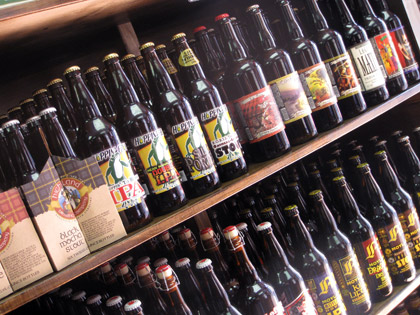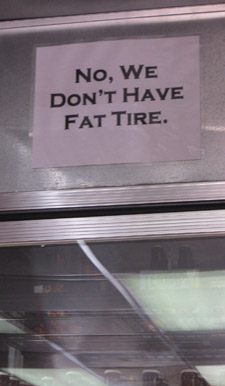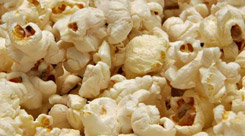If you were writing a book about wheat beers you’d probably think it was good that Anheuser-Busch has rolled out a variety pack of beers brewed with wheat. I do, although I’m not sure this presages a sudden upswing in interest in wheat beers.
I would post this at“Brewing With Wheat” site, but right now that is in information collection mode as opposed to information dissemination.
So, from the press release:
The Michelob Brewing Co. Spring/Summer Sampler Pack, available beginning March 2, includes Michelob Honey Wheat, year-round favorites Shock Top Belgian White and Michelob Dunkel Weisse, and the spring seasonal Hop Hound Amber Wheat. The beers are:
* Michelob Honey Wheat: a silky, smooth filtered wheat ale brewed with orange blossom honey. Brewmaster Kristi Zantop and her team wanted to push the envelope with their newest creation, playing around with different varieties of honey until they found just the right kind to give Honey Wheat a pronounced floral aroma and hints of orange citrus flavor.
* Hop Hound Amber Wheat: an unfiltered American amber wheat ale brewed with Cascade, Willamette and Hallertau hops and a blend of the finest caramel, wheat and pale barley malts.
* Shock Top Belgian White: an unfiltered Belgian-style wheat ale with a naturally cloudy and light golden color, brewed with orange, lemon and lime peels and coriander.
* Michelob Dunkel Weisse: a surprisingly light unfiltered dark wheat ale with unmistakable clove and banana tones, a result imparted from the unique Bavarian yeast strain used.
A-B has sent samples to some bloggers — for all I know one went to our home in New Mexico, but right now we]re trying to figure out where all this East Coast snow came from — so look for reviews online. Here’s one for the Honey Wheat from Jon at the Beer Site.

 Do you think you know where in the beer world these photos were taken?
Do you think you know where in the beer world these photos were taken? In this case he means diacetyl must be there at a pretty high level before he notices it. For some, many in fact, drinkers tolerance means they consider diacetyl desirable.
In this case he means diacetyl must be there at a pretty high level before he notices it. For some, many in fact, drinkers tolerance means they consider diacetyl desirable.